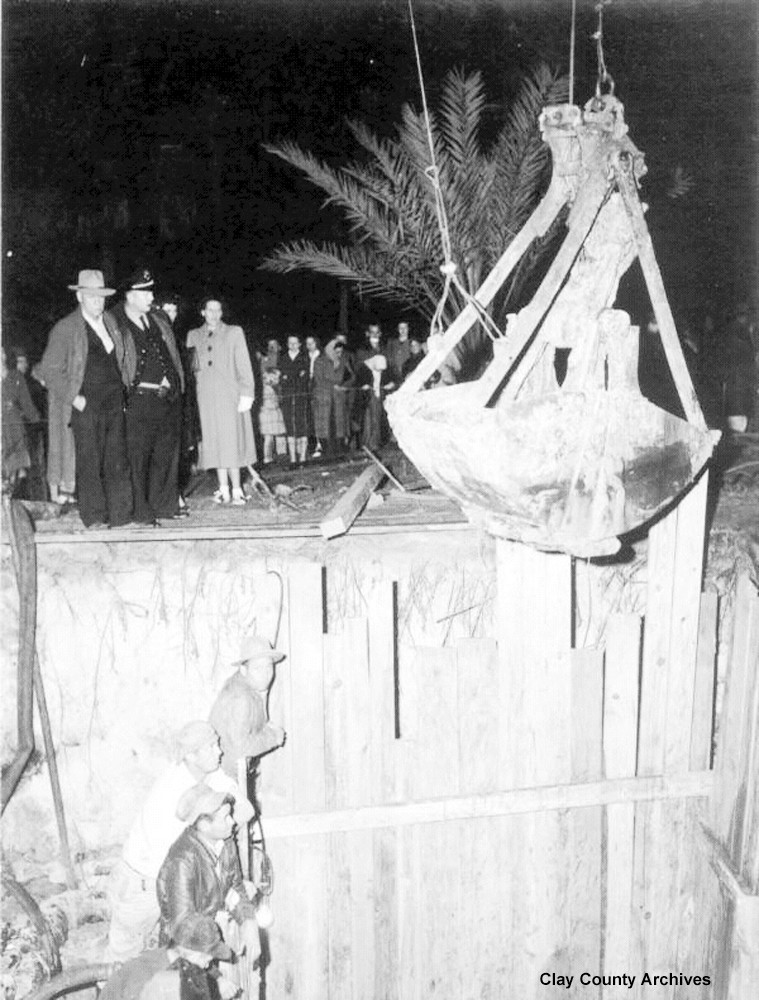Tales of treasures gone missing in Clay County
Over the centuries, in the area that is now Clay County, stories, tales and yarns have popped up like ants at a picnic.
The area around Black Creek alone, with its dark bottomless depths and …
This item is available in full to subscribers.
Attention subscribers
To continue reading, you will need to either log in to your subscriber account, or purchase a new subscription.
If you are a current print subscriber, you can set up a free website account and connect your subscription to it by clicking here.
If you are a digital subscriber with an active, online-only subscription then you already have an account here. Just reset your password if you've not yet logged in to your account on this new site.
Otherwise, click here to view your options for subscribing.
Please log in to continueDon't have an ID?Print subscribersIf you're a print subscriber, but do not yet have an online account, click here to create one. Non-subscribersClick here to see your options for subscribing. Single day passYou also have the option of purchasing 24 hours of access, for $1.00. Click here to purchase a single day pass. |
Tales of treasures gone missing in Clay County
Over the centuries, in the area that is now Clay County, stories, tales and yarns have popped up like ants at a picnic.
The area around Black Creek alone, with its dark bottomless depths and dense woods, is said to be littered with bodies of the losers from fights about politics, livestock, land and love for four centuries.
Legends of lost treasure and gold seem to attract considerable attention. It appears that pirates, the Spanish, the leaders of the Confederacy and otherwise capable large plantation owners were remarkably careless with their valuable assets.
Privateer and freebooter during the Revolutionary War, Dan McGirt, with a British ship in hot pursuit is said to have ducked into Doctors Lake, unloaded his captured golden inventory and promptly dumped it in the spring at the western boundary of today’s Orange Park. Carrying a lighter load, he easily evaded his pursuers.
One version of the tale purports that he returned years later to reclaim the treasure and because his drunken crew raised such a ruckus that they woke the very short-tempered locals on land who lynched McGirt and his crew and left them hanging in the trees to moan on dark nights and breezy days.
This version was popular during the late 1800s and early 1900s when lawyer, Leonidas Wade, of Green Cove Springs owned the property and bottled the spring water to sell to northern resorts. Sadly, for Wade, it only increased adolescent traffic.
It is said that during the First Spanish Period in Florida, the peculiar decision was made to bury a large collection of minted coins and bars somewhere along the old Indian trail that meandered west in what is now southern Clay County. The Spanish were usually pretty good about keeping track of their gold but… Perhaps there is something in the water or the moss.
Likewise, a team of Confederate soldiers is supposed to have been tasked with transporting the last remnants of the rebel treasury to the Florida east coast for dispatch to the islands so that the “South might rise again.” The gold never made it to the rendezvous and was lost somewhere in Clay County.
In the 1880s, when Washington Benedict was developing Orange Park, early settler William Maierfeldt gave tourist wagon tours to the A.M. Reed plantation called Mulberry Grove just across the line in Duval County. Maierfeldt always spun the tale that Reed – in anticipation of occupation during Reconstruction – buried all the family silver and gold in the yard and then could not find it.
Reed probably did bury the family’s valuables and it’s a good thing he did because both the plantation house and his large home in Jacksonville were occupied by Union troops and he was required to swear the loyalty oath three different times.
Hard to believe that a man of Reed’s ability could lose his candle sticks and silverware in his own yard but the plantation was right next to Clay County where valuables seemed to go missing all the time.
Of course, no one is certain these treasures were ever really here but locals crafted good stories about them and maybe folks will start stumbling over them any day now. In the meantime, share the stories.








